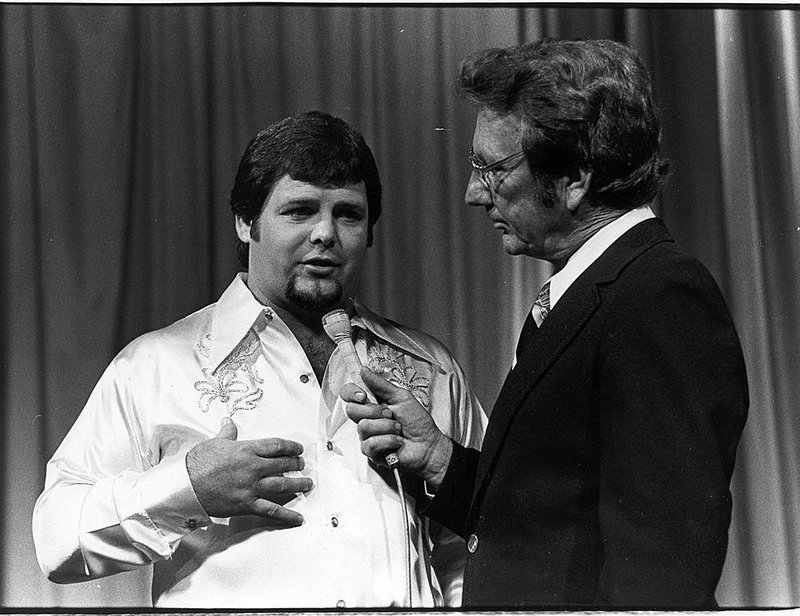LITTLE ROCK — Suplexes and pile drivers, headlocks and drop kicks, baby-faces and heels, promises of threats and bloodshed - for 90 televised minutes every Saturday morning, right after the cartoons ended, professional wrestling reigned supreme in Memphis, and it seemed that everyone with a TV set was tuned in to the latest soap opera taking place inside and outside of the ring.
From the mid-1950s through the end of the ’80s, wrestling was a main attraction in Memphis, and the excellent documentary Memphis Heat: The True Story of Memphis Wrasslin’ captures all of the campy, kitschy, bizarre and violent action.
Directed by Chad Schaffler, and inspired by Ron Hall’s book Sputnik, Masked Men and Midgets, the film draws on archival footage of matches, TV broadcasts and photos to tell the colorful story of this bloody and giddy form of entertainment that captivated the mid-South.
Also included are fascinating interviews with wrestlers including Len Rossi, Billy Wicks, Jackie Fargo, Jimmy Hart, Bill “Superstar” Dundee, “Handsome” Jimmy Valiant, Jerry “The King” Lawler, “Soulman” Rocky Johnson, and promoters Buddy Wayne and Jerry Jarrett.
I’ll be honest. I grew up watching the weekly Memphis wrestling broadcasts with my friends, and seeing these guys talk about the halcyon days of the sport, before cable TV took it nationwide and the local territories started drying up, was a nostalgic treat. I mean, c’mon, there’s the human peacock himself, “Handsome Jimmy” Valiant, the guy who said he knew Mick Jagger and hung out with KISS (fine, it was just part of his act, but we ate it up)!
These were my Saturday morning heroes, and here they are, years later, talking about their exploits.
The Memphis style was more street fight than actual wrestling, with bad guys like Lawler throwing fists wrapped in chains and even using balls of fire to defeat opponents. Of course, it was all scripted, but that didn’t mean the combatants weren’t dishing out real pain. There’s footage from the famous Mid-South Coliseum where Lawler is tossed over the top rope and onto a wooden table by the crazed Canadian Lumberjack Joe LeDuc (in one of the more disturbing scenes, LeDuc slices open his arm with an ax), and we get to see a wicked brawl break out in the concession stand at a Tupelo, Miss., match.
It wasn’t an easy life. Promoters and wrestlers alike bemoan the crushing schedule of almost nightly matches across the region, which included eastern Arkansas, Kentucky, Tennessee, Mississippi and Evansville, Ind. It was a grind, with not a whole lot of pay, but you get the feeling that these guys were living their dream.
The documentary does a good job of telling the history of the Memphis scene, which really got rolling in the ’50s when legendary heel Sputnik Monroe and all-around nice cat Billy Wicks were the top draws.
It was a match between these two that attracted 18,000 spectators to a Memphis ballpark and was officiated by Rocky Marciano. (Wicks won, and took home a Cadillac as his prize, although he also discovered that he owed $5,000 if he wanted to keep it.)
It was Monroe who had the biggest impact, however. He was, in his own words, “235 pounds of twisted steel and sex appeal,” and had come up through the carnival strongman circuit. When he noticed that black patrons at the matches at Memphis’ Ellis Auditorium were relegated to the nosebleed section, he refused to wrestle there until they were allowed to sit with the whites.
Rocky Johnson, father of Dwayne “The Rock” Johnson, called Monroe “A black man in a white man’s body.”
It was Lawler and his skinny, loudmouthed manager, former rock ’n’ roll singer Jimmy Hart,who would eventually rule Memphis wrestling through the late ’70s and ’80s. Lawler, whose face seemed permanently fixed with an expression of extreme smugness, alternated between roles as a heel and a baby-face, waging epic wars with his nemesis, Dundee (and occasionally teaming up with him), and battling out-of towners like Austin Idol, Hulk Hogan, Ric Flair and others. It was common for Lawler and company to sell out the 11,000-seat Mid-South Coliseum every Monday night.
The film also chronicles the puzzling and strange appearances of the late actor and comic Andy Kaufman, then starring in the series Taxi, as he broke into the wrestling game by grappling with large women and taunting Southerners. He would eventually team up with Hart and wrestle Lawler in an intricate storyline that even had Kaufman’s parents thinking that a Lawler pile driver had broken their son’s neck.
By the late ’80s, Hart had left for the World Wrestling Federation, and though the Memphis scene would last another 10 years or so, it was losing steam. In 2001, the show was taken off the air.
It may only appeal to a fairly narrow market, but Memphis Heat comes flying off the top turnbuckle and pins the story of this wild little world to the mat with style.
MovieStyle, Pages 33 on 09/09/2011
